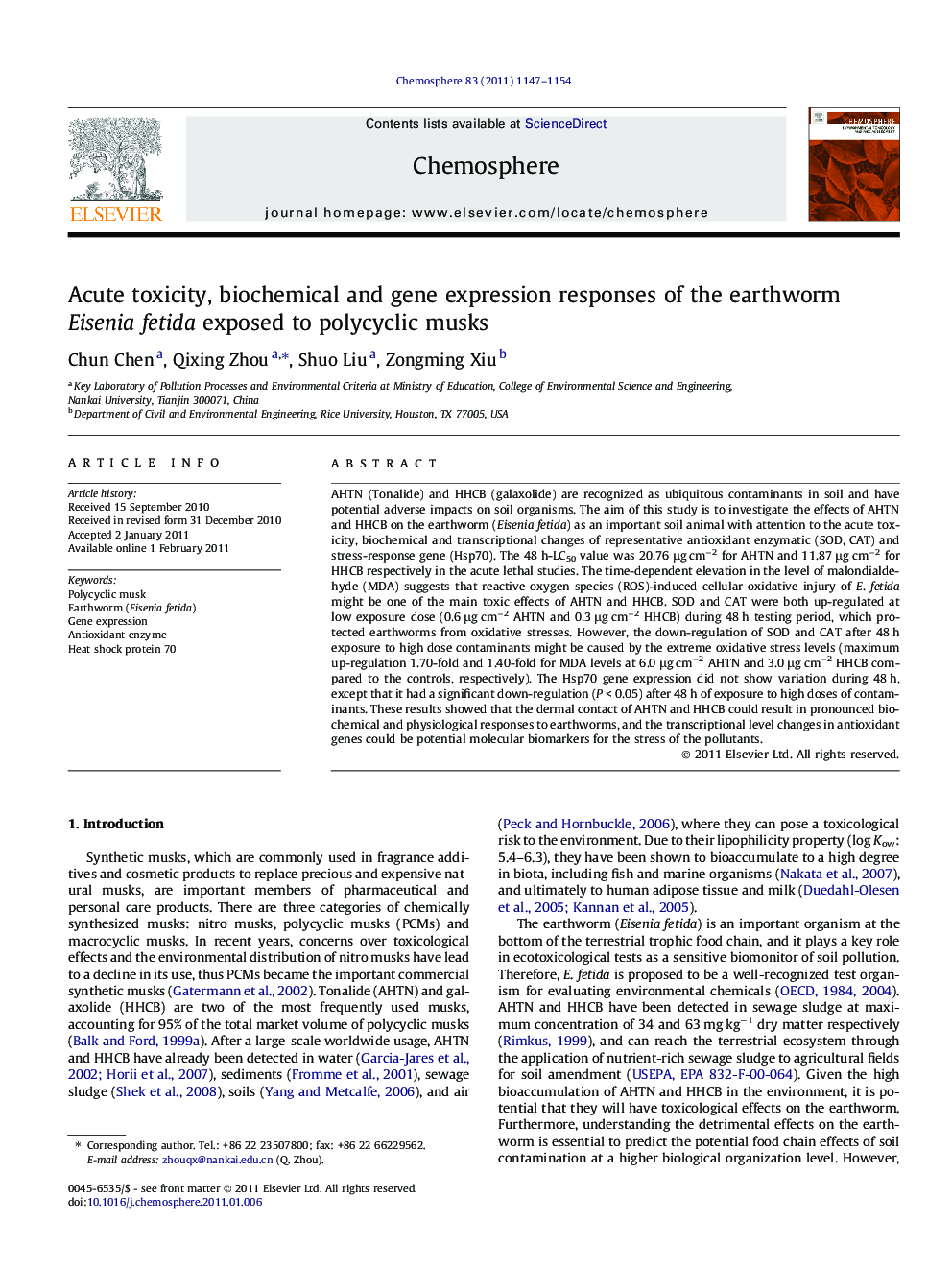| کد مقاله | کد نشریه | سال انتشار | مقاله انگلیسی | نسخه تمام متن |
|---|---|---|---|---|
| 4410694 | 1307560 | 2011 | 8 صفحه PDF | دانلود رایگان |

AHTN (Tonalide) and HHCB (galaxolide) are recognized as ubiquitous contaminants in soil and have potential adverse impacts on soil organisms. The aim of this study is to investigate the effects of AHTN and HHCB on the earthworm (Eisenia fetida) as an important soil animal with attention to the acute toxicity, biochemical and transcriptional changes of representative antioxidant enzymatic (SOD, CAT) and stress-response gene (Hsp70). The 48 h-LC50 value was 20.76 μg cm−2 for AHTN and 11.87 μg cm−2 for HHCB respectively in the acute lethal studies. The time-dependent elevation in the level of malondialdehyde (MDA) suggests that reactive oxygen species (ROS)-induced cellular oxidative injury of E. fetida might be one of the main toxic effects of AHTN and HHCB. SOD and CAT were both up-regulated at low exposure dose (0.6 μg cm−2 AHTN and 0.3 μg cm−2 HHCB) during 48 h testing period, which protected earthworms from oxidative stresses. However, the down-regulation of SOD and CAT after 48 h exposure to high dose contaminants might be caused by the extreme oxidative stress levels (maximum up-regulation 1.70-fold and 1.40-fold for MDA levels at 6.0 μg cm−2 AHTN and 3.0 μg cm−2 HHCB compared to the controls, respectively). The Hsp70 gene expression did not show variation during 48 h, except that it had a significant down-regulation (P < 0.05) after 48 h of exposure to high doses of contaminants. These results showed that the dermal contact of AHTN and HHCB could result in pronounced biochemical and physiological responses to earthworms, and the transcriptional level changes in antioxidant genes could be potential molecular biomarkers for the stress of the pollutants.
Research highlights
► The dermal contact of AHTN and HHCB is highly toxic to earthworm Eisenia fetida.
► AHTN and HHCB exert oxidative stress, which reflects the elevation in MDA level.
► SOD, CAT gene could be potential biomarkers for AHTN and HHCB stresses.
► Down-regulation of Hsp70 gene expression may be due to oxidative stress.
Journal: Chemosphere - Volume 83, Issue 8, May 2011, Pages 1147–1154